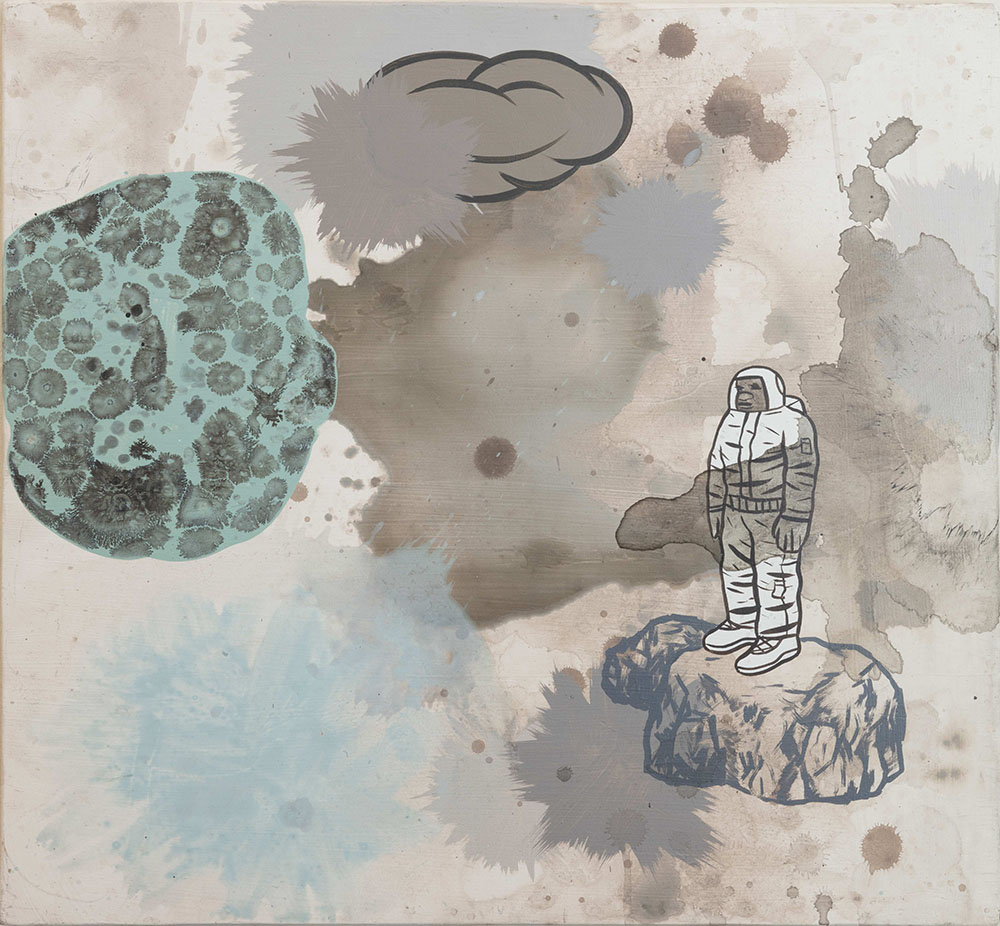Casey Kaplan

Glen Helfand on David Huffman’s ‘Terra Incognita’
The works in David Huffman’s exhibition at the Museum of the African Diaspora (MOAD) have some history behind them. The show, organized by Elena Gross and Emily Kuhlmann, features a selection of paintings, a few ceramic sculptures and a single video representing the artist’s output from the early 1990s to 2009. During this period, Huffman worked with invented, science fiction-inspired narratives and archetypes that he named Traumanauts. They wear protective suits and space helmets and are intergalactic travelers, Black men (and one woman) who wander searching for “freedom and home,” elements of which — houses, churches, firm ground – float on abstract backgrounds of various visual textures.
The theme of home is foundational for the artist. Huffman grew up in Berkeley, where he mounted Afro Hippie last year, an exhibition at the Berkeley Art Center inspired by his mother, an East Bay activist who worked with the Black Panthers. As an adolescent, Huffman became fascinated by the works of Isaac Asimov, Omni magazine and Emmanuel Velikovsky’s Worlds in Collision, a “historical-cosmological” book postulating interplanetary myths of terrestrial and cultural conflicts. This combination of youthful interests and identity coalesced into works that embody Afrofuturist narratives. Reviewing the Afro Hippie show for this publication, Renny Pritikin wrote: “Unbeknownst to many, [Huffman] was also one of the earliest visual artists to define the emerging genre, the central impulse of which is to create a science-fiction world in which Blackness and Black culture can be seen, celebrated and investigated apart from white America’s fraught past and present.”
To read the full article, visit Square Cylinder here